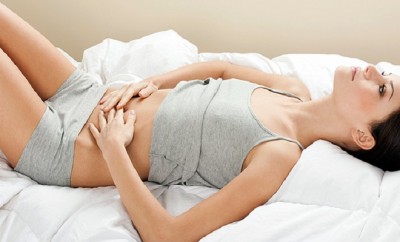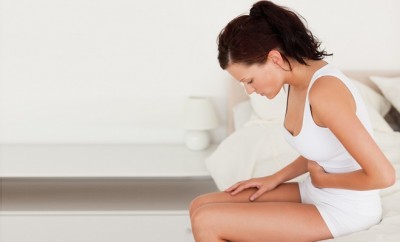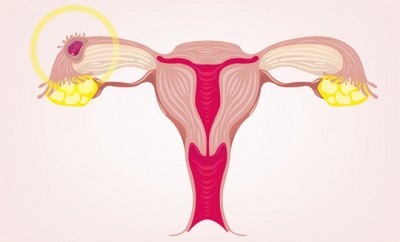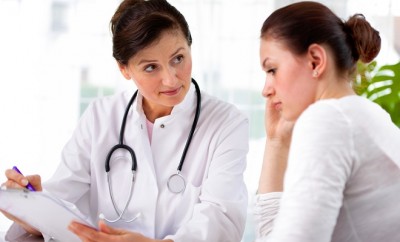Implantation Cramping – Causes, Symptoms and Treatment
Do you feel unusual pain during pregnancy? Worry not. Find out what’s causing these cramps for pregnant women. Implantation cramping is normal, just as with any other stomach pains that occur during pregnancy. Usually, you do not have to worry about them if they are not accompanied by another related pain. However, sometimes it’s better to consult a doctor.
Is there anything I can do to relieve implantation cramps?
Yes, there are some steps that you can take to relieve these cramps, which are perfectly normal during pregnancy.
Throughout the pregnancy, strong and flexible tissues that connect bones (ligaments) are stretched. This may cause you some mild cramping on both sides of the body.
You might notice that these cramps are stronger on the right. This happens because the baby grows in your uterus and tends to lean to the right.
Your ligaments stretch to support the growth of the uterus. Try to sit to see if it helps. Or lie down on the other side of where you feel pain and elevate your feet. Usually, if the pain occurs while you sleep, move on the other side to relieve the cramps .
You can make a warm bath or put a hot water bottle or a hot wheat bag on the painful areas. Try to relax at the same time.
There are also cases when, if you love and reach orgasm, you experience a mild cramping sensation accompanied by back pain. An orgasm causes pulses to reverberate in the vagina and uterus, which can thus give you a cramping sensation.
Sex during pregnancy can turn these reverberations in contractile-type of cramps, especially in the third trimester. You could ease these cramps by having more gentle sex sessions. Also, a back massage can do miracles a times.
What if I have implantation cramping and don’t feel too well?
Cramps in your belly could mean you’re not feeling well for different reasons, not especially related to your pregnancy. Some of the problems that can cause stomach cramps are appendicitis, kidney stones, a urinary tract infection or problems with iron levels. Certain food can also cause cramps at times.
Pregnancy may have only triggered the problem. Some fibroids in uterus, which did not disturb you during conception, could make you feel uncomfortable if you’re pregnant.
Keep a record of the symptoms you feel and tell your doctor or midwife about them. They can tell you if your discomfort is caused by something else than a normal pregnancy pain. They can also help you with practical advices on what to do in this case.
You should contact your doctor anyway if you fail to get rid of cramps after few minutes of rest or if you experience other conditions in association with them, such as:
● pain or burning when urinating
● unusual vaginal discharge
● weakness and pain
● vomiting
● fever
● chills
When do I have to worry about implantation cramping in the 1st trimester?
Usually you do not need to worry about implantation cramping in early pregnancy. But sometimes, if you have other symptoms associated with them, this could mean that you need medical assistance. Only a specialized physician or gynecologist can give you a personalized treatment along with practical advices for maintaining your pregnancy.
When do I have to worry about cramps in the 2nd trimester?
If you face only simple cramps in the 2nd trimester, then this should not be a concern to you. There is still a very small chance to be a symptom of late pregnancy loss, but only if the cramps are accompanied by bleeding.
Be aware that late pregnancy losses are much less common than early pregnancy losses. Here are some details about late pregnancy losses :
● What will I feel ? Cramps and heavy bleeding.
● When will it happen? In the period between between 12th and 23rd week of pregnancy.
● What should I do? If you have vaginal bleeding or easy suppuration, consult a doctor or midwife. If you face strong bleeding go straight to the nearest hospital .
When do I have to worry about cramps in the 3rd trimester?
By the 3rd quarter space allocated to fetus is extended. Cramps that occur in the belly during this period may signal the fact that your body is not relaxed with regular birth, so the main concern will be premature birth.
If you go into preterm labor that does not always mean that the fetus must be born right then and right there. Sometimes, as long as no water was broken, it’s just a false alarm.
Here are some details about preterm labor :
● What will I feel? Pain in the pelvic area and lower abdomen in association with back pain, mild cramps in the belly and diarrhea . You might feel like your water breaks and have regular contractions or feel the uterus narrows by itself, often without pain.
● When will it happen? Time between the 23rd and 37th week of pregnancy.
● What should I do? Call your doctor, midwife or someone in the medical staff immediately. If you assume that your water was broken, call the nearest hospital first .
If you have cramps after you get past the 37th week of pregnancy, it could mean that you are in the early stages of labor. At this stage you have nothing to worry about because of cramps, which are a normal part of your body waiting to give birth.
You might feel a constant pain in the lower back , caused by increased pressure on the pelvic and back area. Cramps during early labor are much lighter than the ones you have during active labor. It might be helpful if you rest a little on the sofa a proceed to a light walk .
If you find can, find your own way to deal with discomfort when you are in the active labor phase. Keep in mind that cramps do not appear at random, they are always signaling something. Implantation cramping is most often a sign of pregnancy.













